Toshiba Satellite U845W Ultrabook Review: Going Wide at 21:9
by Dustin Sklavos on October 16, 2012 12:01 AM ESTOverall Performance
The Ivy Bridge CPU that beats at the heart of the Toshiba Satellite U845W isn't the fastest on the block, but it should certainly be adequate. Using a caching solution instead of a dedicated SSD is bound to hurt PCMark scores, but I did find in practice that it was a healthy step up from just having a straight mechanical hard disk in the system. You can at least feel the difference when using the U845W.
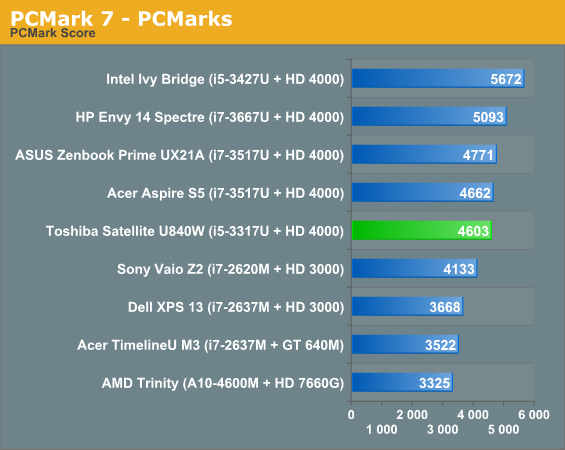
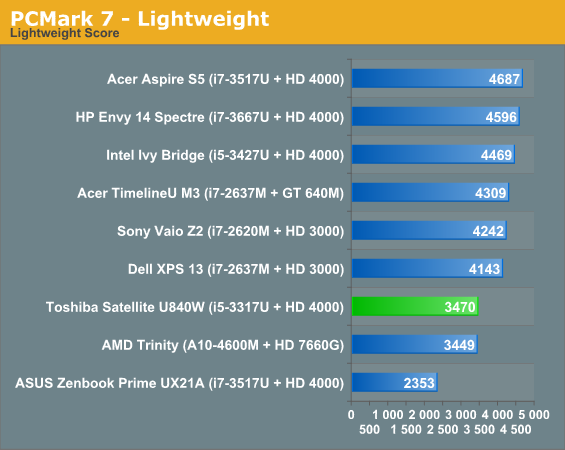
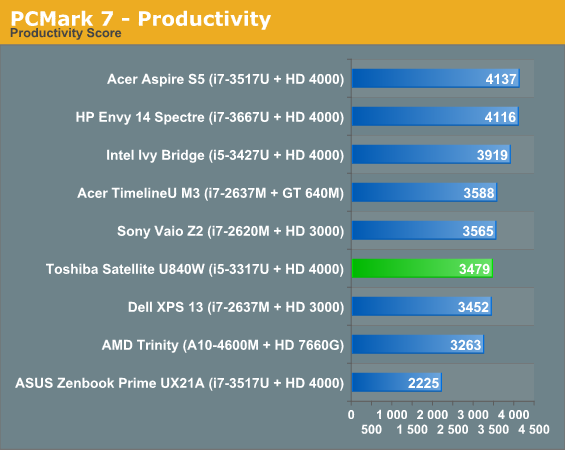
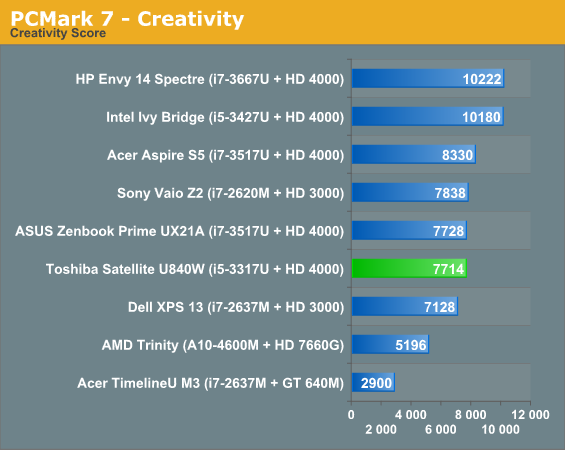
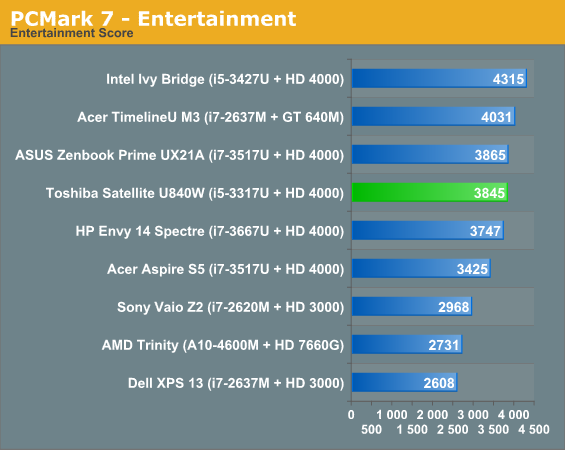
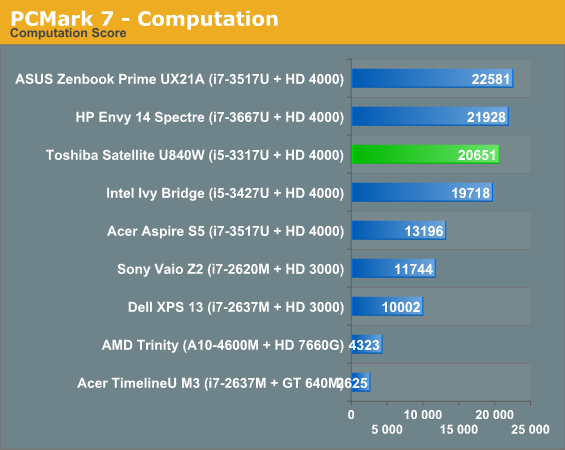
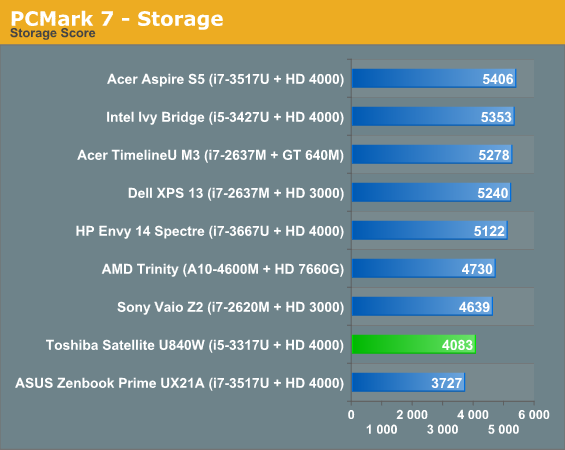
The lack of a dedicated SSD causes the U845W to jump around the charts a bit. PCMark Vantage should hopefully paint a clearer picture.
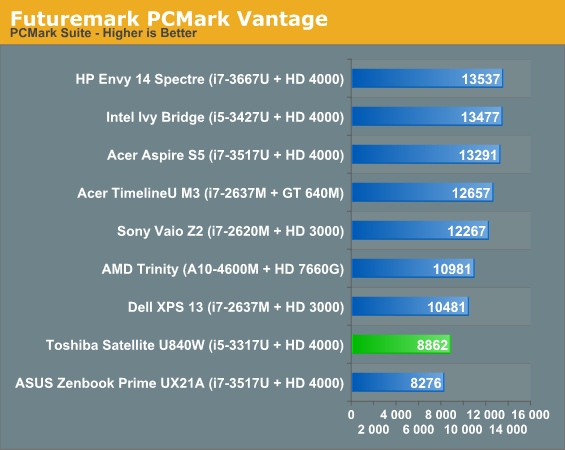
And there it is. Caching helps, but generally a dedicated SSD produces superior performance.
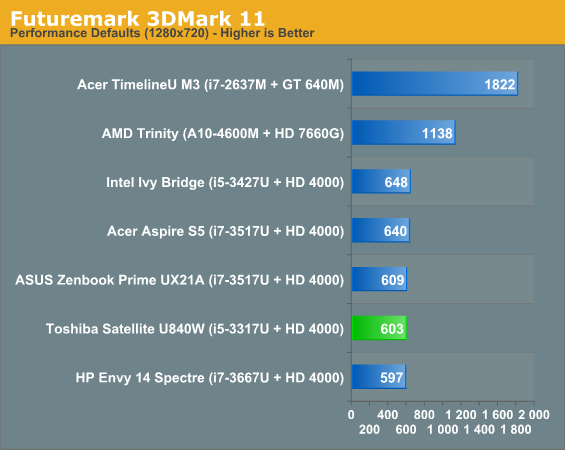
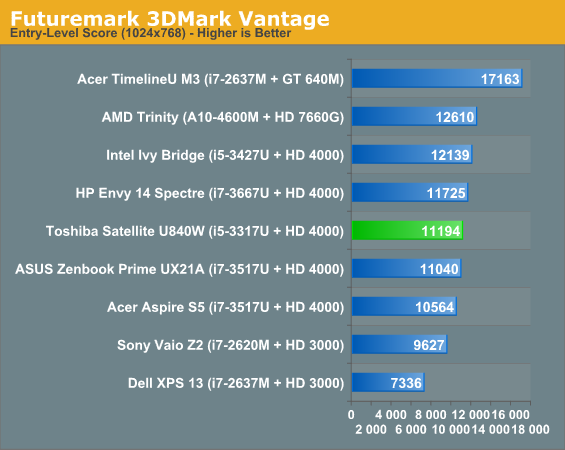

3DMark performance is pretty much where we'd expect it, even a bit better. As you'll see later on, Toshiba's thermal solution for the Satellite U845W is actually a very good one, and that extra thermal headroom is probably allowing the notebook to run in turbo modes for longer than some of the competing designs (as seen in 3DMark06).
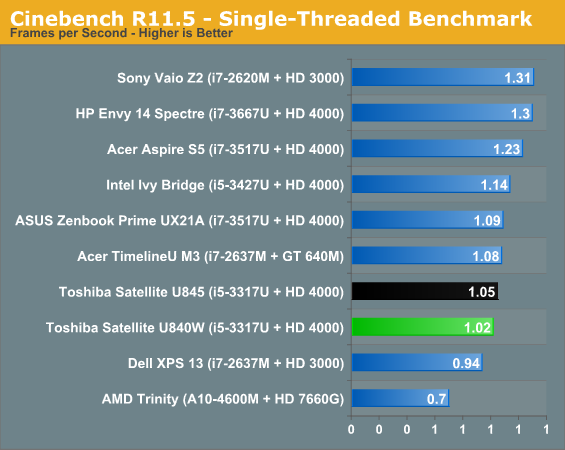
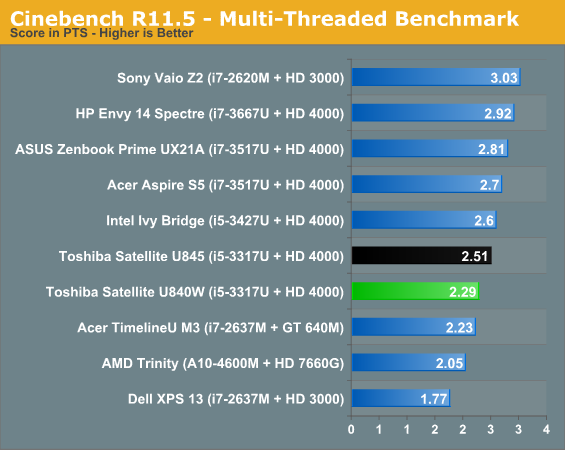
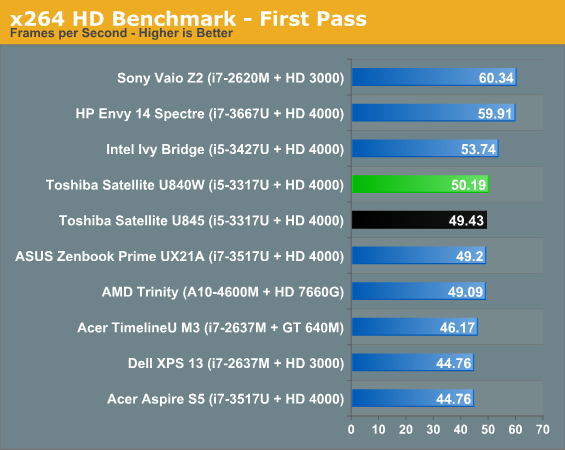
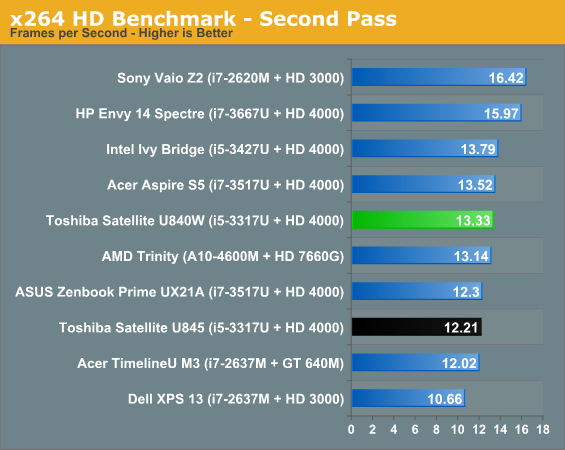
The Satellite U845W and comparable U845 produce fairly consistent scores and are cetainly capable enough notebooks.
While ordinarily I eschew doing gaming benchmarking on HD 4000-equipped systems unless we just don't have enough scores, I'm making an exception with the U845W. The reason is a simple one: the appeal of potentially gaming at a 21:9 resolution. I will say that subjectively games do look really cool on the U845W, and that makes the lack of a dedicated graphics solution a little heartbreaking.
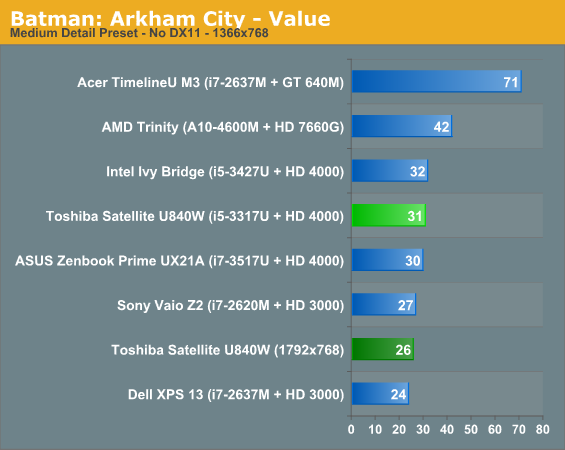
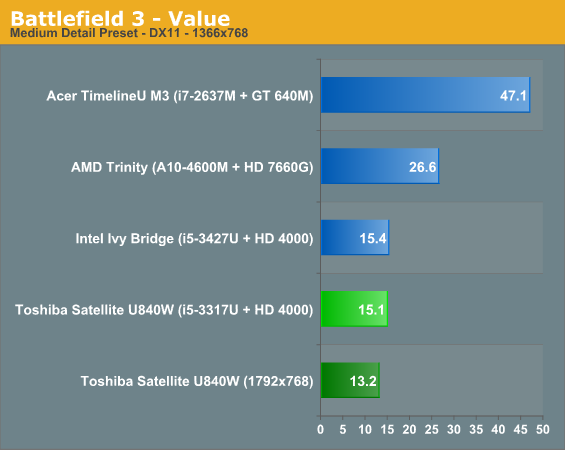
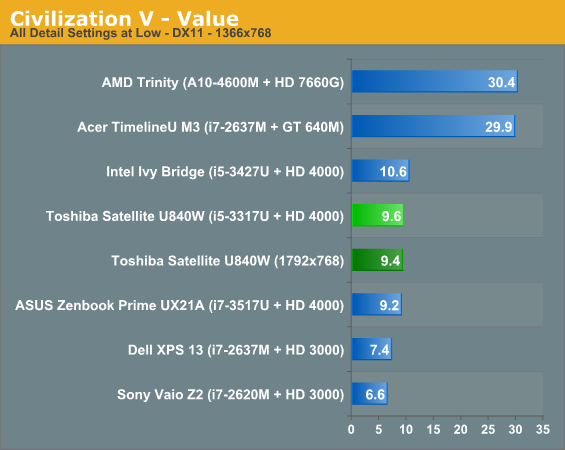
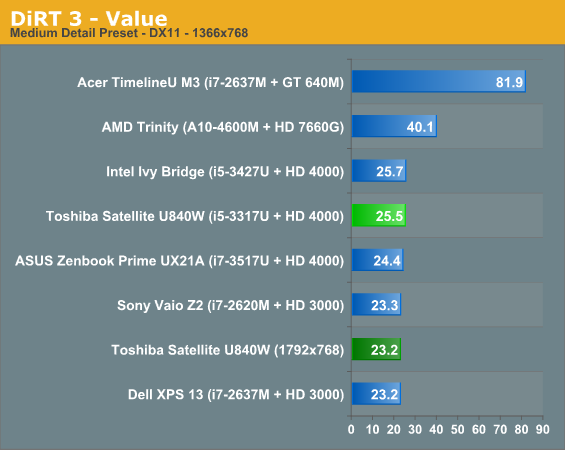
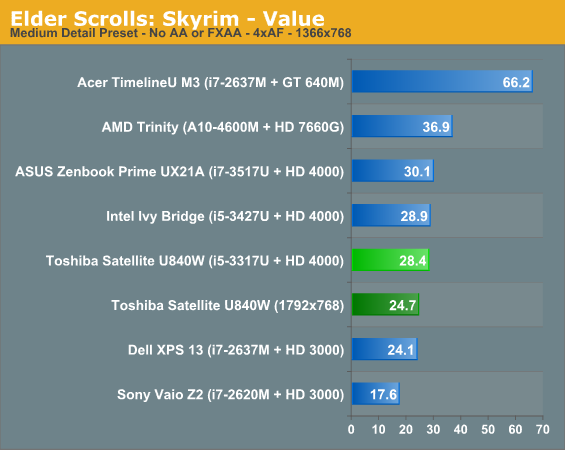
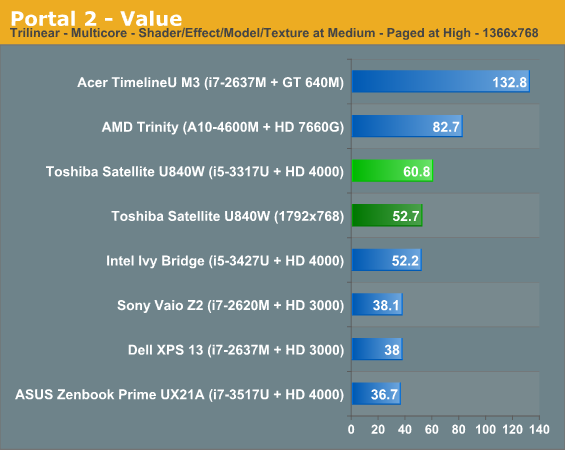
Only Portal 2 offers truly playable performance, but it's worth noting that the increase in resolution doesn't seem to hurt the Ivy Bridge GPU too badly. If you're willing to bring settings even further down, there's a good chance you can make a few of the games here playable. That means the HD 4000 in the U845W will certainly do in a pinch, but I'd love to see Toshiba come out with a model that has even a low end 28nm die-shrunk Fermi in it. Something with just a little more kick than the HD 4000.










57 Comments
View All Comments
Dorin Nicolaescu-Musteață - Tuesday, October 16, 2012 - link
I'd rather have a proper „editing block” (i.e. Home, End, PgUp, PhDn etc.)DanNeely - Tuesday, October 16, 2012 - link
same here.Samus - Wednesday, October 17, 2012 - link
I know, amazingly the only real flaw with this thing is the typical Toshiba keyboard layout. Other than that, $700 for this type of machine is reasonable if you can adjust to the location of the keys (I can't, if it isn't a Thinkpad editing block I can't do it)noblemo - Tuesday, October 16, 2012 - link
I had the same thought initially. According to PCMag the space is used for "sweet sounding" Harman/Kardon speakers.Poopship - Tuesday, October 16, 2012 - link
I've always wanted a super wide screen laptop with a tn panel at a stupid low resolution. I also hate it when my videos fill up the whole screen because black bars are awesome. It would be perfect for movies released in 2.37, i'll just pop in a blura-- oh.MobiusStrip - Tuesday, October 16, 2012 - link
Wouldn't matter. Blu-Ray doesn't support 7:3. You'd still wind up with 16:9 material with black borders, or you'd have to zoom in and lose resolution.Rick83 - Tuesday, October 16, 2012 - link
Since the display is neither 1920 pixels in width, nor 720 pixels in height, you will always be using non-native resolutions.The advantage with the wider aspect ratio, is that you can crop some of the 1080 vertical pixels (i.e. those in the letter box) and scale the result to 1792 pixels of width (or just crop the borders, if you prefer using the native resolution, and don't mind losing 64 pixels left and right (and about 30 top and bottom)
I hope that we get decently sized wide desktop screens soon.
Some 3840x1600 32" displays would be awesome. I'd be willing to plop down about $2.5-3k for such a display, if it can do localized contrast and brightness control, 10/12 bit color and decent grays, as well as be well calibrated. S-PVA or S-IPS with multiple high-frequency PWM ccfl backlights, or Adobe-RGB color LEDs.
And bloody USB (or displayport, thunderbolt) remote control! It's been done ten years ago, the cost is negligible, but not having to reach across the desk to use some god forsaken OSD to manage the screen is so worth it. Especially if the screen were to support advanced features.
rarson - Wednesday, October 17, 2012 - link
Aspect ratio and resolution are two different things. You all are confused.kmieciu - Tuesday, October 16, 2012 - link
perfect for some retro side-scrolling platform gamesStuka87 - Wednesday, October 17, 2012 - link
Dude, I was thinking the same thing! You could see like half the level!